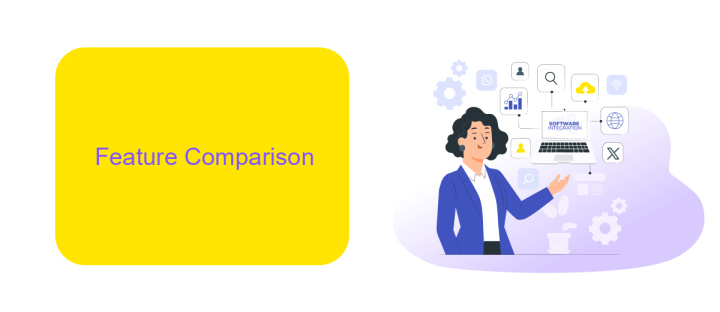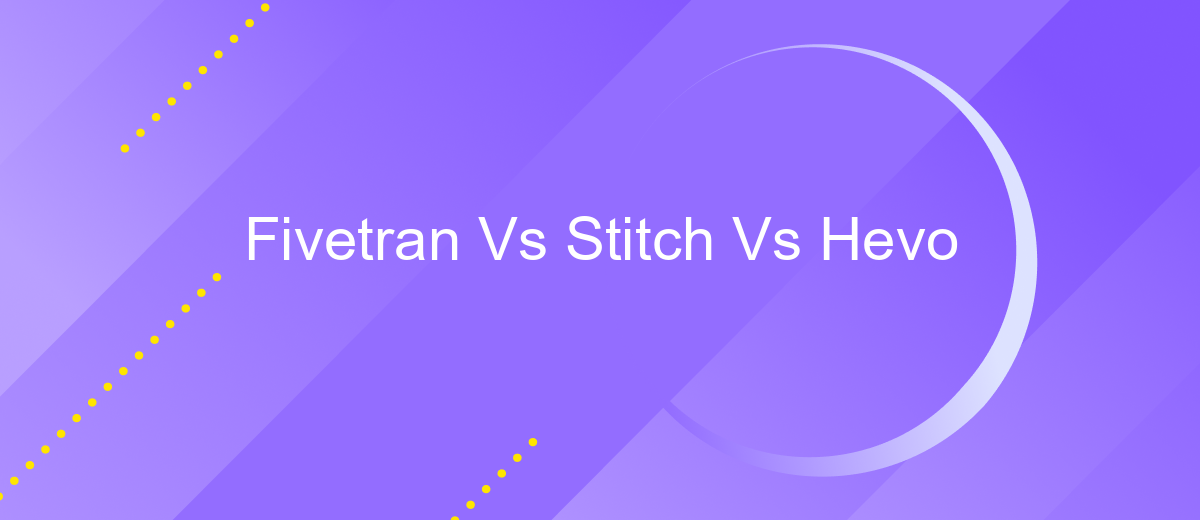Fivetran Vs Stitch Vs Hevo
In today's data-driven world, efficient data integration is crucial for businesses seeking to harness the power of their information. Fivetran, Stitch, and Hevo are three leading ETL (Extract, Transform, Load) platforms that promise seamless data connectivity and transformation. This article compares these solutions, highlighting their features, pricing, and suitability for various business needs to help you make an informed choice.
Introduction
In today's data-driven world, businesses rely heavily on data integration tools to streamline their operations and make informed decisions. Among the leading solutions in this space are Fivetran, Stitch, and Hevo. Each of these platforms offers unique features and capabilities that cater to different business needs and technical requirements.
- Fivetran: Known for its automated data pipelines and seamless integration with a wide range of data sources.
- Stitch: Popular for its simplicity and cost-effectiveness, making it ideal for small to medium-sized businesses.
- Hevo: Offers real-time data replication and a user-friendly interface, suitable for companies seeking quick and efficient data integration.
Choosing the right data integration tool can significantly impact your business's efficiency and data accuracy. Additionally, services like ApiX-Drive can further enhance your integration processes by offering an easy-to-use platform for connecting various applications and automating workflows. Understanding the strengths and limitations of each tool will help you make an informed decision that aligns with your business objectives.
Feature Comparison

When comparing Fivetran, Stitch, and Hevo, it's essential to consider their key features. Fivetran offers automated data integration with a focus on accuracy and reliability, ensuring data is always up-to-date. Stitch provides a more flexible, open-source approach, allowing users to customize their data pipelines. Hevo, on the other hand, emphasizes real-time data replication and offers a user-friendly interface for quick setup and deployment.
Each platform supports a wide range of data sources and destinations, but they differ in their ease of use and customization options. Fivetran excels in its hands-off approach, making it ideal for businesses seeking a fully managed solution. Stitch appeals to those who need more control over their data transformations. Hevo stands out with its real-time capabilities and intuitive design. For those looking to streamline their integration processes further, services like ApiX-Drive can offer additional automation and ease of use, enhancing the overall data management experience.
Pricing

When comparing the pricing of Fivetran, Stitch, and Hevo, it's essential to consider the unique needs of your business. Each platform offers different pricing models based on data volume, features, and support.
- Fivetran: Fivetran charges based on the volume of data processed. The pricing tiers are designed for scalability, making it suitable for growing businesses.
- Stitch: Stitch offers a more flexible pricing model with a pay-as-you-go system. This can be advantageous for smaller businesses or those with fluctuating data needs.
- Hevo: Hevo provides a subscription-based pricing model, which includes different tiers based on features and data volume. This can be beneficial for businesses looking for a predictable monthly cost.
Choosing the right platform depends on your specific requirements and budget. Additionally, integrating these services with ApiX-Drive can streamline your data management processes, providing a more efficient and automated solution.
Pros and Cons

When comparing Fivetran, Stitch, and Hevo, it's essential to consider their strengths and weaknesses. Each platform offers unique features that cater to different business needs, but they also have their limitations.
Fivetran is known for its robust data integration capabilities and ease of use, making it a popular choice for many businesses. However, its pricing can be a barrier for smaller companies. Stitch, on the other hand, provides a more affordable solution but may lack some advanced features found in Fivetran. Hevo offers a balance between the two, with a user-friendly interface and competitive pricing, but it might not support as many data sources.
- Fivetran: Easy to use, robust integration, but expensive.
- Stitch: Affordable, good for basic needs, but lacks advanced features.
- Hevo: User-friendly, competitive pricing, but limited data source support.
For businesses looking to streamline their data integration processes, considering a service like ApiX-Drive can be beneficial. ApiX-Drive offers seamless integration capabilities, making it easier to connect various data sources and automate workflows without extensive technical knowledge.
Conclusion
In conclusion, choosing between Fivetran, Stitch, and Hevo depends on your specific data integration needs and organizational requirements. Fivetran excels in automation and ease of use, making it ideal for businesses that prioritize minimal manual intervention. Stitch offers a flexible and cost-effective solution, suitable for smaller teams or startups looking for a scalable option. Hevo, on the other hand, provides a robust platform with extensive real-time data capabilities, catering to enterprises that need comprehensive data management features.
For organizations seeking additional customization and integration options, services like ApiX-Drive can further enhance your data workflows. ApiX-Drive offers a versatile platform to connect various applications and automate data transfers, complementing the capabilities of Fivetran, Stitch, and Hevo. Ultimately, the best choice will hinge on your specific data integration needs, budget, and the level of customization required.
- Automate the work of an online store or landing
- Empower through integration
- Don't spend money on programmers and integrators
- Save time by automating routine tasks
FAQ
What are the main differences between Fivetran, Stitch, and Hevo?
Which tool is the most cost-effective for small businesses?
How do these tools handle data transformations?
Are these tools suitable for real-time data integration?
What are the alternatives for automating and setting up integrations?
Apix-Drive will help optimize business processes, save you from a lot of routine tasks and unnecessary costs for automation, attracting additional specialists. Try setting up a free test connection with ApiX-Drive and see for yourself. Now you have to think about where to invest the freed time and money!


